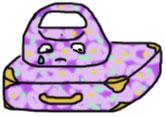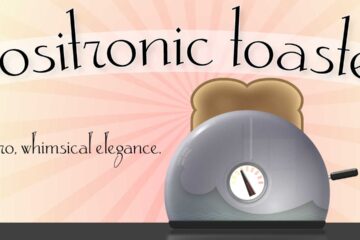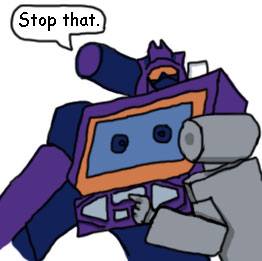This will be cross-posted to Analog’s new blog site.
My story in the current issue of Analog has the longest history of any short story I’ve written, and is, like its protagonist, a strange creature of thrown together parts.
I’ve wanted to be a science fiction writer as long as I’ve known writers were people and not ancient demigods birthed whole from the forehead of Joe Campbell. When I read that Isaac Asimov had first published at eighteen, I set myself the goal of selling a story by my eighteenth birthday. I neglected schoolwork. I filled spiral-bound notebooks. I haunted the school computer lab and ate up reams of dot-matrix paper until the custodian kicked me out on his way home each night.
I failed. But I did join a writing workshop – a professional writer’s workshop at the precocious age of sixteen! The circle of adults peered at my first story. One fellow said, “This isn’t writing; it’s typing,” which witticism I didn’t know wasn’t his invention. I was proud of myself for not feeling hurt. After all, this was my first attempt. I took notes. I wrote another story.
“Your aliens aren’t alien,” a kinder member explained. “They talk and act just like people – in fact they all act and talk like the narrator.”
I wrote down “make aliens truly alien,” certain this was The Secret that would open my future to me. With renewed enthusiasm, I set out to use my imagination…
My imagination was a barren wasteland. I wasn’t entirely sure I had one. Still, I kept picking at the idea. How do you make aliens alien? I listed all my favorite aliens from Star Trek and Star Wars and The Hitchhiker’s Guide to the Galaxy. Scribbles and notes and aborted story drafts followed.
I clearly remember it was in college, leafing through the D&D Monsters Manual, when I had a promising idea. “What if they are symbiotic beings? Not one symbiant and host like the Trill on Star Trek – what if the components are all equal and have to negotiate and work together? A fun tumble of intelligent organs all swimming into each other and hooking up? What sort of minds would they have?”
I started a draft called “The Heart Farmer.” What if, like, these aliens had to grow their hearts like fish in a farm? Would it be more like a farm or like a nursery? Would they feel their organs were more like pets or children?
It didn’t get far. I had a cool idea and a setting, but I didn’t know how to turn it into a problem with a resolution. I wrote a paragraph from the heart’s point of view, struggling to escape his pool without other body parts. It… still didn’t go anywhere. Why was the heart running away? I wrote another draft with the “farmer” finding his hearts mysteriously dying. But why? I didn’t know.
Okay, I could come up with problems, but not resolutions.
I tried it as a first contact story from a human perspective. This was easier. The human character could point and say, “Look how alien this is!” But then I got all caught up in if they could communicate or not and abandoned this draft, too.
I should say all of this was in my teens-to-twenties.
The story stayed in the back of my brain and on my hard drive in a file called “Story Ideas” that dutifully transferred from desktop to laptop to new laptop. A full two decades passed.
In 2012, I pledged to write fifty stories in six weeks for the Clarion Write-a-Thon. I’d need to write just over a story a day, so I was very motivated to mine material from my old notes and half-completed drafts.
Oh it was wonderful. After so many barren years, barely holding on to my dreams as I slid into middle age, this write-a-thon let me be a kid again. I neglected work. I neglected exercise. The very first day of the write-a-thon, my husband took me to Cedar Point. I stayed up late writing in the hotel room and carried a notebook with me to the roller coaster lines. I wrote at the table at my 20th high school reunion.
It was toward the end of the write-a-thon, as my ideas were running scarce on the ground, that I turned to my little heart farmers.
I hadn’t saved any of those old drafts, so I wrote from scratch. It was titled “The Heart Farmers” and was from the point of view of the Earth Ambassador to Planet Galadora, which was having a desperate crisis too delicate to discuss openly. The hearts were rebelling. They didn’t want to live their lives in the bodies of the Galadorians. My hero was unable to do anything and the story ends with the free hearts swimming away from the genocide they’ve wreaked.
What a terrible story. Not really a plot, and the main character has NO agency and it didn’t make sense that the Galadorians couldn’t force the hearts into their chests somehow. It was over a thousand words and had a beginning, middle, and end, though, so it counted for my write-a-thon.
It and 49 other stories sat dormant on my hard drive. I attended Clarion in 2013 and wrote new stories. (I do not mean to imply that taking part in the write-a-thon will improve one’s chances in applying to Clarion but I suspect the foundation wouldn’t mind if I did.) I started, in fact, selling stories. Every sale was the end and beginning of the world in 2014. Each signaled the Dawn of my Career and simultaneously The Last Fluke Sale of a Complete Hack.
Don’t look too closely at the emotional baggage of the anxious author.

Emotional Baggage
Feeling my energies flagging, I signed up to do the write-a-thon again in 2015. Seven stories into my 50, my intestines stopped working. I spent much of 2015 and 2016 in the hospital. The only writing I did was a long series of fever-dreams and metaphors for intestinal pain.
That said, I’m not sure all the intense awareness of my organs didn’t subliminally influence the re-write that hadn’t happened yet.
So now it was 2017 and I was going to do the write-a-thon again at last! Once again, about halfway through my idea-fountain started drying up. I decided to use my original write-a-thon stories as jumping off points. I took another look at “The Heart Farmers” and said, “oh no. No. This needs to be entirely from the Galadarian’s point of view. This ambassador doesn’t do squat. Cut her.”
In fact, I knew it would be better still from the heart’s point of view. “But not just hearts,” I said. I remembered my first, teenaged idea of a community of organs. I abandoned what I’d written to write something closer to that. Sometimes you have to wander far from your original vision to see it properly.
I played with different creatures taking the lead role but it was when I decided to make the creature I found least interesting – the body – the main character that things started falling together. Everything was external to the body, who I had at first thought of as non-sentient, a sort of structural beast of burden.
I had all of a day to write, so I was free to slap it together. The body had to find its friends, a heart, a lung, a brain… I had no inciting incident but I had something that felt wonderfully like a structure.
I thought it would be cute to have a human ask if the heart had led the way. “Let your heart be your guide” and all that rot. So I wrote the possible last line, “Why do you ask if our heart led us? Hearts are shy.”
I came up with the title, then, “The Reluctant Heart, The Willing Body.”
Then things fell in as needed. Okay, the inciting incident was humans landing. Okay, how did the body learn of that? Okay, who does he get first? Okay, why does he need each body part? Okay, what do the humans do?
I added a little “first contact” bit on the next day and it wasn’t as narratively complete as my last attempt, but it felt more satisfying. When the write-a-thon was over, I showed the draft to a first reader, one of my Clarion classmates. He found it nigh incomprehensible. I’d been so focused on describing things from a Truly Alien point of view, I’d left out all the explanations that would make a human know what was really going on.
I felt like such a fool! A talentless hack! I cried. I got over myself. I revised. Lots of telling added to the showing. Telling is important, sometimes.
I showed the story to my writing workshop. “It’s like Dorothy finding the Tin Man and the Scarecrow,” one member said. I felt as proud as if I’d intended that. Most of the others said, “I like it, but it’s weird.”
I took all their advice and I let it stew and then I revised again and voila – the story I spent over twenty years writing sold within months. I’d gathered a heart first, but it took a long time to get my brain (imagination) and body (structure) into it.


